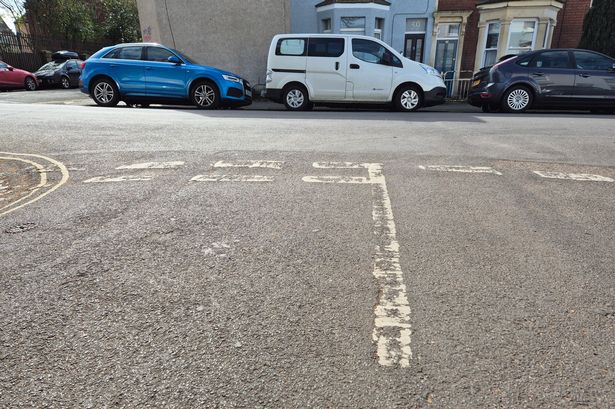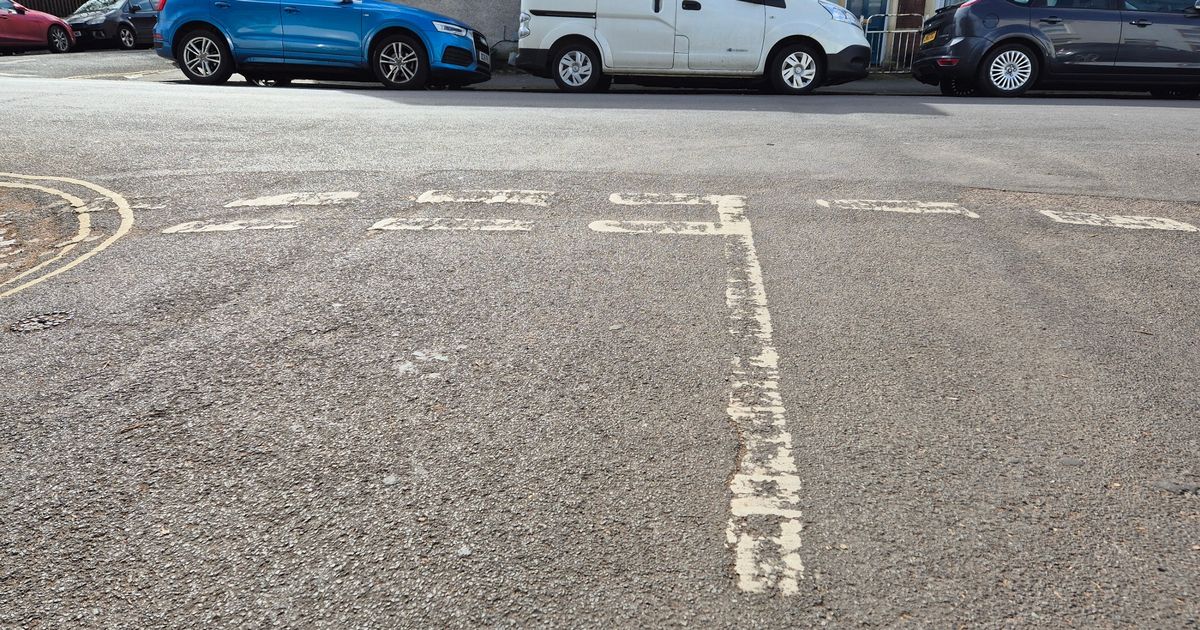Research suggests a lack of lines makes drivers go slower (Image: Alex Seabrook )
(Image: Alex Seabrook )
Centre white lines on some 20mph roads in Bristol won’t be repainted as part of a new safety push. Research suggests that a lack of centre lines makes drivers go slower and give more space to cyclists when overtaking.
When contractors resurface roads, some of these won’t have their white lines replaced. Safety experts at Bristol City Council believe the lack of white lines could actually make the roads less dangerous, as drivers have to pay more attention to their positioning and oncoming vehicles.
The changes were approved by councillors on the transport policy committee on Thursday, October 23. However Labour and Tory opposition councillors said the policy seemed to them counter-intuitive, and raised fears that self-driving cars might need centre lines in the future.
Labour Councillor Kaz Self said: “I’m concerned about the lack of robust research on this and I’m reluctant for Bristol to be a kind of guinea pig. I’m also concerned about learner drivers and elderly drivers who might need centre lines, and it may well be that autonomous vehicles need centre lines as well.”
Conservative Cllr Jonathan Hucker added: “From a road safety perspective, it does feel counter-intuitive. Speaking as a driver with 43 years experience, I know that I feel safer when I’m on a road that has white lines down the middle. So I’m struggling to support this.”
However this approach has already been taken in some parts of Bristol for several years. Residents have raised safety concerns on only a few roads with the council, and without evidence of collisions. Main roads won’t be affected, rather just quiet residential areas where there is often parking on both sides rendering the centre line redundant anyway.
Many narrow roads now have much more parking than they used to. Cars have also generally become larger, with giant SUVs more popular than ever before. This means that it’s sometimes impossible for drivers to stay within the white lines when driving through residential areas. Meanwhile, the council is hoping to repaint markings on main roads more quickly than before.
A lack of road markings has long affected many parts of Bristol, with faded markings on many roads, not just those with 20mph speed limits. Busy roundabouts and junctions sometimes have no markings or barely visible ones, which in March last year drew criticism from the Tories. And since the Greens took control of the council, they have hired extra road marking crews.
Green Cllr Ed Plowden, chair of the transport committee, said: “We recognise that the road markings are not in a good state. That’s a legacy that we’ve inherited. We’re now organising for four crews to be out there, proactively doing an area and responding to concerns from councillors, and prioritising things like double yellow lines which are safety features and zebras.
“There’s a lot of evidence to show that if drivers know they’re within the line and an oncoming vehicle is within the line, they won’t do anything to compensate for the risk. If it’s not so clear, they’ll slow down. If drivers are feeling safe, they’re likely to take more risks which puts vulnerable people like cyclists and pedestrians more at risk.”
The policy came under fire from Kerry McCarthy, Labour MP for Bristol East. After the meeting, writing on Facebook she said that leaving roads without centre lines was “reckless”.
She added: “I believe central markings are vital in helping drivers to judge the road and to drive safely. To deliberately allow them to lapse and not repaint them, on the basis of such flimsy evidence, is reckless in the extreme.”
But this contrasts with the claims from road safety experts, who say that centre lines lead to increases in speed. On the other hand, slower driving speeds are linked to fewer car crashes.
Professor Adrian Davis, who carried out an evidence review for the Road Safety Trust, said: “Centre line removal has been applied by UK Highways Authorities on 20mph and 30mph speed limit roads, and in other countries. The evidence which exists suggests between a 1 and 2mph speed reduction.
“Speed reduction is causally linked to fewer crashes and injuries. By contrast, adding centre-lines almost always leads to increases in speed.”
Green Cllr David Wilcox added: “This psychological technique is designed to encourage drivers to slow down on quiet residential streets, enhancing safety for all and is one of the many ways we can achieve speed reduction. In areas where parked vehicles take up both sides of the road, the centre line is often unnecessary, prompting drivers to slow down if they’re unsure of their surroundings naturally.
“For instance, Wordsworth Road in my ward of Lockleaze, has not had a centreline since 2008; it’s a busy bus route along a residential road that is also a cycle route. This does not mean that we underestimate the importance of clear road markings, and this administration is taking action by boosting the line-painting team from one to three, aiming to repaint vital white lines across the Bristol road network.
“The poor condition of white and yellow lines is a consequence of budget cuts by the last administration, which neglected this crucial safety feature. Now, these efforts are restoring visual cues that keep everyone safer.”
